Anime is hand-drawn and computer-generated animation originating from Japan. Outside Japan and in English, anime refers specifically to animation produced in Japan. However, in Japan and in Japanese, anime describes all animated works, regardless of style or origin. Animation produced outside Japan with similar style to Japanese animation is commonly referred to as anime-influenced animation.

Neon Genesis Evangelion, also known simply as Evangelion or Eva, is a Japanese mecha anime television series produced by Gainax and animated by Tatsunoko, directed by Hideaki Anno and broadcast on TV Tokyo from October 1995 to March 1996. Evangelion is set fifteen years after a worldwide cataclysm named Second Impact, particularly in the futuristic fortified city of Tokyo-3. The protagonist is Shinji Ikari, a teenage boy who is recruited by his father Gendo to the shadowy organization Nerv to pilot a giant bio-machine mecha named Evangelion into combat against beings known as Angels.
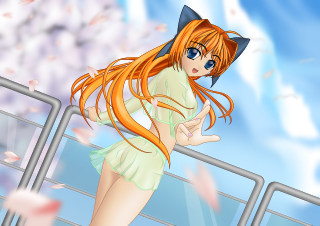
Ecchi is a slang term in the Japanese language for playfully sexual actions. As an adjective, it is used with the meaning of "sexy", "dirty" or "naughty"; as a verb, ecchi suru means "to have sex", and as a noun, it is used to describe someone of lascivious behavior. It is softer than the Japanese word ero, and does not imply perversion in the way hentai does.
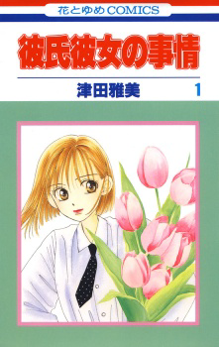
Kare Kano is a Japanese manga series written and illustrated by Masami Tsuda. It was serialized in LaLa from 1995 to 2005 and collected in 21 tankōbon volumes by Hakusensha. It depicts the romance between "perfect" student Yukino Miyazawa and her academic rival Soichiro Arima, and the relationships of several of their friends.
The history of anime can be traced back to the start of the 20th century, with the earliest verifiable films dating from 1912. Before the advent of film, Japan already had a rich tradition of entertainment with colourful painted figures moving across the projection screen in utsushi-e (写し絵), a particular Japanese type of magic lantern show popular in the 19th century. Possibly inspired by European phantasmagoria shows, utsushi-e showmen used mechanical slides and developed lightweight wooden projectors (furo) that were handheld so that several performers could each control the motions of different projected figures.

One Piece is a Japanese manga series written and illustrated by Eiichiro Oda. It has been serialized in Shueisha's shōnen manga magazine Weekly Shōnen Jump since July 1997, with its individual chapters compiled into 106 tankōbon volumes as of July 2023. The story follows the adventures of Monkey D. Luffy and his crew, the Straw Hat Pirates, where he explores the Grand Line in search of the mythical treasure known as the "One Piece" in order to become the next King of the Pirates.

Nadia: The Secret of Blue Water is a Japanese anime television series created by NHK, Toho, and Korad, from a concept of Hayao Miyazaki, and directed by Hideaki Anno of Gainax. Inspired by the works of Jules Verne, particularly Twenty Thousand Leagues Under the Sea and the exploits of Captain Nemo, the series follows young inventor Jean and former circus performer Nadia, who are led off to adventure by a secret in Nadia's pendant.

Sol Bianca: The Legacy is a Japanese OVA miniseries of six episodes loosely based on the OVA series Sol Bianca and employing computer generated animation. This version is a re-imagining of the ship and crew of Sol Bianca, and does not follow the continuity of the original. Sol Bianca: The Legacy combines 3D graphics with 2D animation, particularly in rendering spaceships such as the Sol Bianca itself.
Helen McCarthy is the British author of such anime reference books as 500 Manga Heroes and Villains, Anime!, The Anime Movie Guide and Hayao Miyazaki: Master of Japanese Animation. She is the co-author of The Erotic Anime Movie Guide and the exhaustive The Anime Encyclopedia with Jonathan Clements. She also designs needlework and textile art.
Ōten Shimokawa was a Japanese artist, considered to be one of the founding artists and pioneers of anime. Little is known of his early personal life, other than that his family moved to the Tokyo area when he was nine years old. Here he began working for Tokyo Puck magazine as a political cartoonist and manga series artist.
Anime song, also shortened to anison (アニソン), is a genre of music originating from Japanese pop music. Anime songs consist of theme, insert, and image songs for anime, manga, video game, and audio drama CD series, as well as any other song released primarily for the anime market, including music from Japanese voice actors.
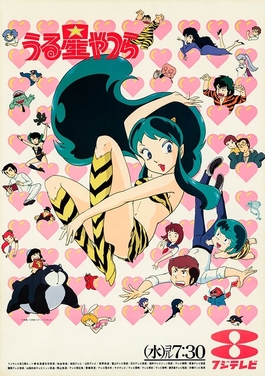
Urusei Yatsura is a Japanese anime television series produced by Kitty Films that aired on Fuji Television from October 14, 1981, to March 19, 1986. It is based on the manga series of the same name by Rumiko Takahashi and was co-produced by Pierrot until episode 106, and Studio Deen for the rest of the series. The series was licensed in North America by AnimEigo in 1992, and released the series English subbed on VHS in October that year. Their license expired in 2011, and is currently licensed by Discotek Media.

Gyakuten! Ippatsuman (逆転!イッパツマン) is a Japanese anime television series broadcast from February 13, 1982 to March 26, 1983, comprising 58 episodes. It is the sixth entry to the Time Bokan series by Tatsunoko Productions and the second series to feature a super robot as the main hero. The series succeeded Yattodetaman and preceded Itadakiman in 1983. The title character is playable in the fighting game Tatsunoko vs. Capcom: Ultimate All-Stars.

The Anime Encyclopedia: A Guide to Japanese Animation Since 1917 is a 2001 encyclopedia written by Jonathan Clements and Helen McCarthy. It was published in 2001 by Stone Bridge Press in the United States, and a "revised and expanded" edition was released in 2006. In the United Kingdom, it was published by Titan Books. The third edition was released on 3 March 2015 with the subtitle of A Century of Japanese Animation. It gives an overview of most of the famous anime works since 1917.
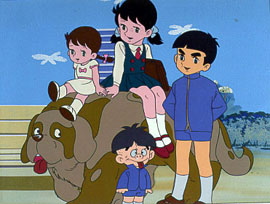
Akane-chan is a shōjo manga series by Tetsuya Chiba. It was serialized in Shōjo Friend, published by Kodansha, from April to September 1968. It was adapted into a monochrome 1968 Toei anime series with the same name directed by Fusahito Nagaki, Yasuo Yamaguchi, Yugo Serikawa and Takeshi Tamiya, which was originally broadcast on Fuji TV.
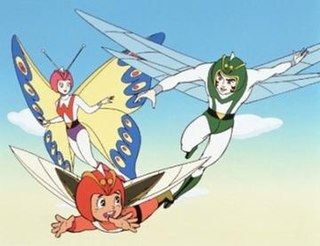
Microid S is a manga series written and illustrated by Osamu Tezuka, published in Akita Shoten's Weekly Shōnen Champion from March 1973 to September 1973. It was later adapted into an anime series by Toei.

Jungle Kurobe is a children's anime series by Fujiko Fujio.
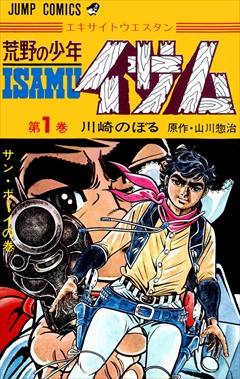
Kōya no Shōnen Isamu, is a Japanese manga series written by Sōji Yamakawa and illustrated by Noboru Kawasaki. It was published in Weekly Shōnen Jump from 1971 to 1974.